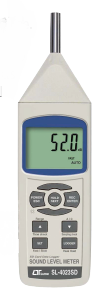FHWA-SA-15-029
Rumble Strips and Noise
Center and edge line or shoulder rumble strips are extremely effective in reducing severe roadway departure crashes at a low cost. Rumble strips use both noise and vibration to alert a driver that he or she is leaving the travel path. To be effective, the noise generated inside the vehicle must rouse a drowsy driver or grab the attention of a distracted driver. Since there is a wide range of "drowsiness" and "distraction" inside the vehicle compartment, more noise is typically better. On the other hand, the noise generated outside the vehicle can be disruptive to residents or businesses in the area, and the goal is to produce as little sound as possible outside the vehicle. The focus of this fact sheet is to address ways to mitigate those exterior noise concerns while maintaining the effectiveness of rumble strips as a safety countermeasure.
NOISE FACTS
- The sound of rumble strips has a different character than highway traffic, which may heighten annoyance.
- Rumble strip noise is measured using a sound-level meter similar to that shown in Figure 1. There is no method that adequately measures the different character of the noise of rumble strips, so the methods developed for measuring highway traffic noise are used, but with a focus on the maximum noise level rather than averages over a period of time.
- Increased alerting noise in the vehicle is found with higher speeds, shallower departure angles, decreased rumble strip spacing, and increased rumble strip depth, width, and length.

PLACEMENT ISSUES AND SOLUTIONS
Standard agency practices will typically take into account noise and other concerns, but there may be unique locations, situations, or conditions that need to be assessed, and flexibility in design and application may need to be considered. Any mitigation effort will potentially result in reducing the safety effect. Horizontal curvature can cause additional incidental contact (and associated noise) with:
- Center line rumble strips due to vehicles intentionally cutting the curve short, or
- Edge line or shoulder rumble strips due to inadvertent off-tracking. This is especially true where the operating speeds do not correlate with the superelevation or where the percentage of large vehicles is high.
To address this potential source of unnecessary road noise, agencies may consider widening the pavement through the curve or using a "spiral transition" to reduce the likelihood of vehicles crossing the rumble strips. Where pavement width cannot be adjusted prior to installing rumble strips, here are some options to consider:
- For center line rumble strips, consider restriping the pavement to increase the travel lane width while reducing the shoulder width.
- For edge or shoulder rumble strips, consider placing the strips at a greater offset from the edge line in the specific locations where noise might be problematic.
Intersections and major driveways are locations where rumble strips are typically discontinued because:
- Center line rumble strips within the intersection would be crossed by left-turning traffic or entering vehicles, and
- Edge line or shoulder rumbles on the approach may cause noise concerns due to drivers pulling to the right in advance of a right turn.
Passing zones with center line rumble strips will result in occasional noise from passing maneuvers. In sections where significant passing is expected, such as steep slopes without climbing lanes or tangents following a long curvilinear alignment, consider a break in the rumble strips within the passing zone if there are residences nearby.
DESIGN AND FLEXIBILITY FOR REDUCED NOISE
Agencies balance rumble strip safety effectiveness and quality of life for those who live along the roadway when developing rumble strip policies and design standards. Some DOTs vary rumble strip dimensions in order to allow use of rumbles along more corridors while reducing noise on sections of roadway where it might otherwise be unacceptable to install rumble strips.
Offsetting shoulder rumble strips from the edge line is the primary method currently used by agencies to reduce nuisance noise from shoulder rumble strips. While vehicle tires tend to touch edge line rumble strips more frequently than shoulder rumble strips due to their placement closer to the traveled way, edge line rumble strips provide better wet nighttime visibility and pavement marking durability. Increasing the offset of shoulder rumble strips from the standard practice is an option in sections where noise is a concern.
Depth is also a dimension that has been adjusted and is known to offer a significant reduction to the loudness inside the vehicle, which likely translates to some reduction externally.
Spacing of the rumble strips may also be adjusted to reduce external noise, although this adjustment is currently experimental.
Sinusoidal-shaped rumble strips are a new design concept that is also being studied to determine whether it minimizes external noise while maximizing the alerting noise inside the vehicle. Research currently indicates that, as with other shapes, this depends greatly on the specific dimensions installed.
OUTREACH
Garnering public support prior to installation of rumble strips on a statewide or regional basis may be critical to the success of this low-cost countermeasure. Agencies have garnered public acceptance by:
- Inviting the public to comment and address their questions and concerns directly,
- Emphasizing road user safety first and foremost,
- Seeking to understand the specific concerns of each community member and being willing to modify the design and placement of rumble strips on an as-needed basis, and
- Educating the public on options.
For More Information
The following resources provide more details related to rumble strip noise, use, and design:
- FHWA-SA-033: Rumble Strip Implementation Guide: Addressing Noise Issues on Two-Lane Roads
- NCHRP 641: Guidance for the Design and Application of Shoulder and Centerline Rumble Strips
- FHWA's Rumble Strip Website: https://highways.dot.gov/safety/rwd/keep-vehicles-road/rumble-strips
Page last modified on September 9, 2015
